
Introduction
Brief Overview: A pivotal question arises amid global debates and discussions: “Is Climate Change Real?” Our inquiry delves into the pressing matter of global climatic shifts, a pivotal concern affecting Earth. This exploration forms the core of our investigation into these significant environmental changes.
Purpose: This article explores this essential question, clarifying the facts and debunking climate change myths. Through this, we seek to understand the topic at hand comprehensively.
What is Climate Change?
- Definition: Climate change refers to significant, long-term changes in Earth’s climate patterns.
- Causes: Primarily driven by human activities, notably fossil fuel burning and deforestation.
The Evidence
🌍 Observable Changes 🌡️
- Rising Temperatures: Globally, temperatures have risen significantly over the past century.
- Melting Ice: Polar ice caps and glaciers are melting at alarming rates.
- Extreme Weather Events: Increased frequency of hurricanes, droughts, floods and fires.
🔬 Scientific Consensus 📊
- Research and Studies: Overwhelming scientific research confirms climate change is real and accelerating.
- International Acknowledgment: Endorsed by major scientific organizations worldwide.
Impact of Climate Change
🌳 On the Environment 🌿
- Biodiversity Loss: Species extinction rates are escalating due to habitat changes.
- Ecosystem Disruption: Altered weather patterns are affecting ecosystems globally.
👥 On Humanity 🌐
- Health Risks: Rising temperatures contribute to heatwaves and the spread of diseases.
- Economic Consequences: Climate change poses significant risks to global economies.
Addressing Climate Change
🚶 Individual Actions 🌱
- Reducing Carbon Footprint: Simple steps like using public transport help reduce emissions.
- Sustainable Choices: Opting for renewable energy sources and recycling.
🌍 Global Efforts 🤝
- International Agreements: Initiatives like the Paris Agreement aim to mitigate the effects of climate change.
- Innovation and Technology: Advances in technology are crucial for finding sustainable solutions.
✨ Concluding This First Introductory Section 📖
- Urgent Need for Action: Urgent and collaborative actions are required to tackle climate change.
- Hope for the Future: With increased knowledge and decisive action, we can effectively mitigate the negative impacts of climate change.
As we wrap up our opening remarks and transition into the next section, “Understanding Climate Change,” we continue to delve into the critical question: “Is Climate Change Real or Not?”
This exploration forms the backbone of our discussion, guiding us through the nuances and complexities of this pivotal environmental challenge.

Understanding Climate Change
- Definition: Climate change involves significant alterations in global weather patterns over time.
- Historical Perspective: The examination of shifting global weather patterns started in the 19th century and has advanced alongside contemporary science.
🔍 Climate Change: A Closer Look 🔎
🌱 Origin of the Concept 📜
- Early Theories: Scientists like Eunice Newton Foote and John Tyndall first theorized about greenhouse gases in the 1850s.
- Advancements in Understanding: The 20th century saw significant leaps in understanding climate systems and human impact.
🌞 The Greenhouse Effect 🌡️
- Basic Explanation: Certain atmospheric gases trap heat, regulating our planet’s temperature.
- Human Influence: Human activities, mainly burning fossil fuels, increase these heat-trapping gases.
📚 The Progression of Climate Change Studies 🌐
🔭 Early Observations to Present 🕒
- Initial Discoveries: Early studies focused on natural climate variations over geological times.
- Modern Research: Now, the emphasis is on human-induced changes, using advanced technology for data analysis.
🎯 Key Milestones 🌟
- International Panel on Climate Change (IPCC): Since 1988, they have provided comprehensive climate assessments.
- Recent Reports: Emphasize the quickening rate of global climatic shifts resulting from human actions. This acceleration is a key focus in current environmental studies.
The Reality of Climate Change
- Overwhelming Evidence: Many studies and a strong scientific agreement confirm the reality of Earth’s shifting climate conditions.
- Visible Effects: Observable changes in weather patterns, ice melt, and rising sea levels and major disasters confirm this.
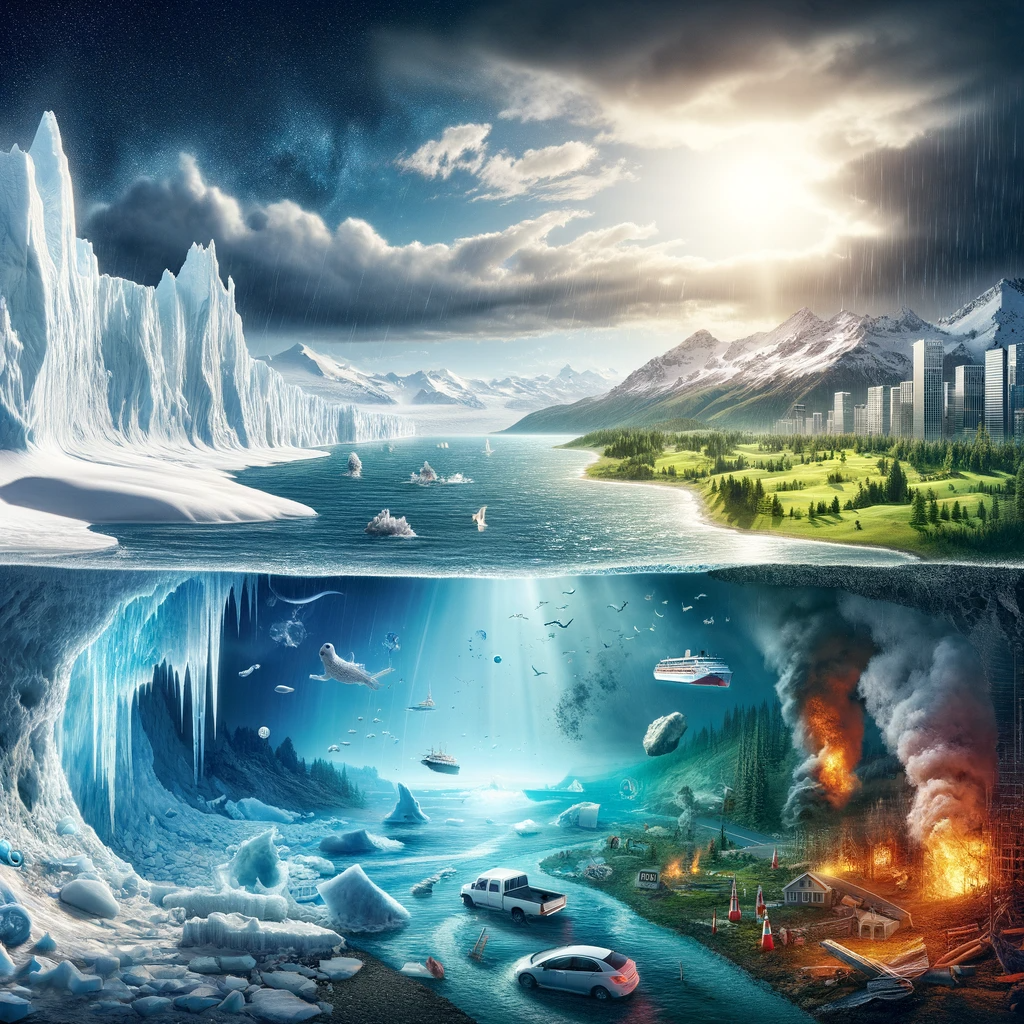
🧐 Dissecting Myths and Facts 💡
🗯️ Common Myths 💭
- “It’s Just a Natural Cycle”: Scientific evidence shows current changes are not just natural variations.
- “Climate Has Always Changed”: Today’s swift shifts in global climate patterns are unmatched in both their pace and magnitude.
📘 Hard Facts 📈
- Rising CO2 Levels: Carbon dioxide levels are at their highest in 3 million years.
- Global Temperature Increase: The last decade was the warmest on record.
🔬 The Science Behind the Reality 🌍
📖 Research and Studies 🧪
- Broad Consensus: 97% of climate experts concur that human activities are hastening the acceleration of global climatic shifts.
- Data-Driven Conclusions: Studies use satellite data, ice cores, and other methods to track climate changes.
🌐 The Global Response 🤝
📜 International Agreements and Policies 🌍
- Paris Agreement: A landmark global accord to combat climate change and reduce emissions.
- Renewable Energy Initiatives: Investments in solar, wind, and other sustainable technologies are increasing.
👫 Community and Individual Efforts 🌱
- Grassroots Movements: Local initiatives and community actions are vital in spreading awareness.
- Personal Responsibility: Simple lifestyle changes can significantly reduce one’s carbon footprint.
✒️ Concluding The Reality of Climate Change 📘
- Irrefutable Reality: Climate change is a definitive and pressing global issue.
- Call to Action: Understanding, recognizing, and acting on the challenges posed by the shifting global climate is crucial.
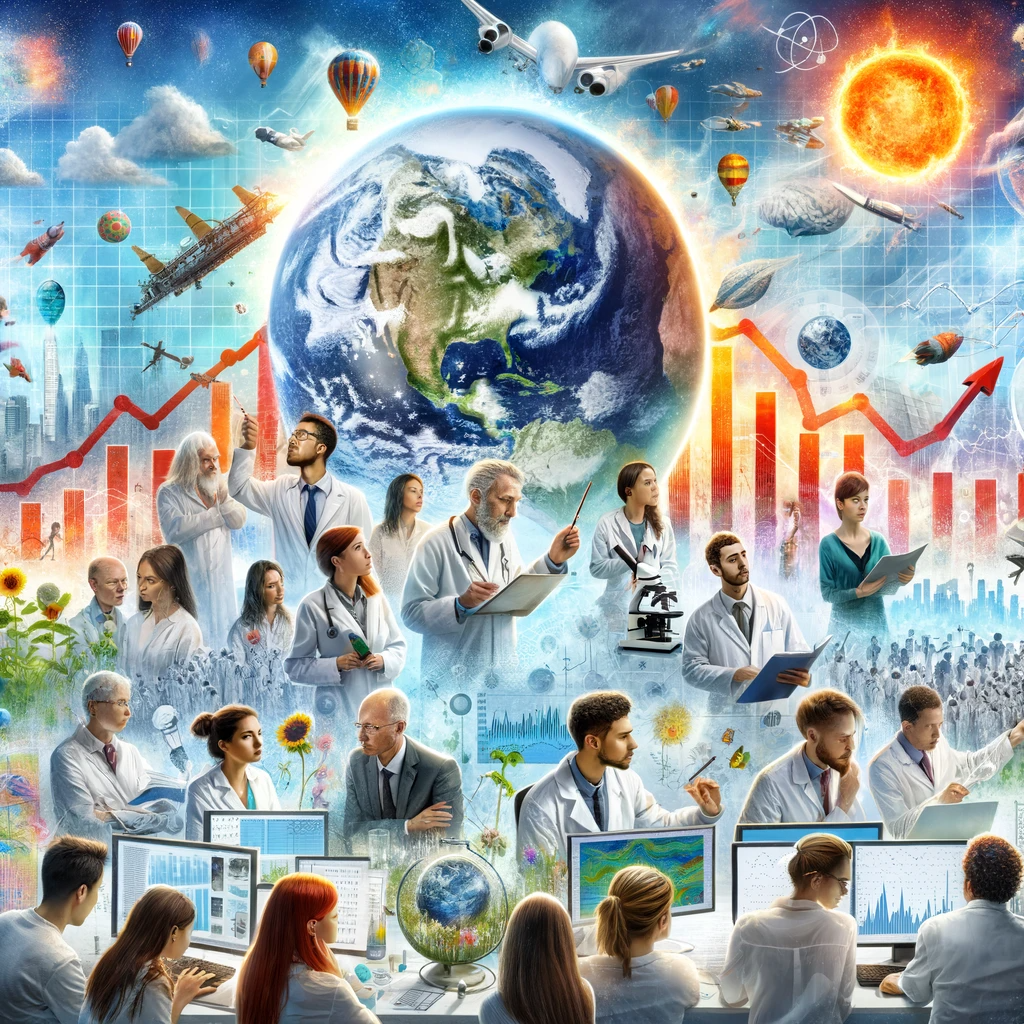
Scientific Evidence
- Consensus Overview: A strong, unified scientific consensus acknowledges climate change as a critical global issue.
- Key Findings: Major studies consistently show rapid, human-driven climate alterations.
🤝 The Consensus on Climate Change 🔎
🎓 Unanimity Among Experts 🌐
- Global Agreement: Scientists across the globe concur on the significant human impact on global climatic alterations.
- Solidarity in Science: This consensus is rare, indicating the strength of the evidence.
📄 Reports and Declarations 🖊️
- IPCC Reports: These comprehensive documents are a cornerstone of climate science.
- Scientific Organizations: Groups like the American Meteorological Society affirm climate change realities.
💡 Groundbreaking Findings in Climate Research 🌍
🔍 Pivotal Studies 🔬
- Temperature Records: Show a clear, long-term global warming trend.
- Ice Core Analysis: Reveals atmospheric CO2 levels over millennia, linking them to temperature.
📊 Impactful Reports 🌟
⚠️ Scientists Warn of Imminent Breach of Global Warming ‘Safe’ Threshold Within Six Years 🔥
- This article discusses a critical warning from scientists regarding the fast-approaching breach of the global warming ‘safe’ threshold, expected within the next six years.
- It delves into the potential consequences of surpassing this threshold and emphasizes the urgent need for comprehensive climate action to mitigate these risks.
🌡️IPCC Special Report on Global Warming 📘
- A crucial report that provides information on the consequences of a temperature rise of 1.5°C.
🇺🇸 National Climate Assessments 📈
- Provide in-depth insight into climate impacts in the United States.
🍁Canada’s Changing Climate Report” (CCCR) 🌧️
- This report evaluates Canada’s climate change knowledge and future projections, contextualizing them within the broader global climate issue.
🌎 The State of Climate Action 2023 by the World Resources Institute 📊
- This report provides a comprehensive road map for closing the gap in climate action across sectors to limit global warming to 1.5°C. It emphasizes the need for urgent acceleration in actions this decade to reduce greenhouse gas emissions.
🔍 Understanding the Data 📈
📡 Methods of Data Collection 🌐
- Satellite Observations: Offer a global perspective on climate change.
- Ocean Buoys and Weather Stations: Collect vital temperature changes and patterns data.
🧐 Interpretation of Findings 🔬
- Data Analysis Techniques: Advanced software and models analyze vast climate data sets.
- Correlation to Human Activity: Clear connections between industrial activities and climate shifts.
✒️ Concluding the Scientific Evidence 📚
- Incontestable Human Role: The evidence overwhelmingly shows human activities drive climate change.
- Path Forward: Recognizing and addressing these impacts is crucial for a sustainable future.
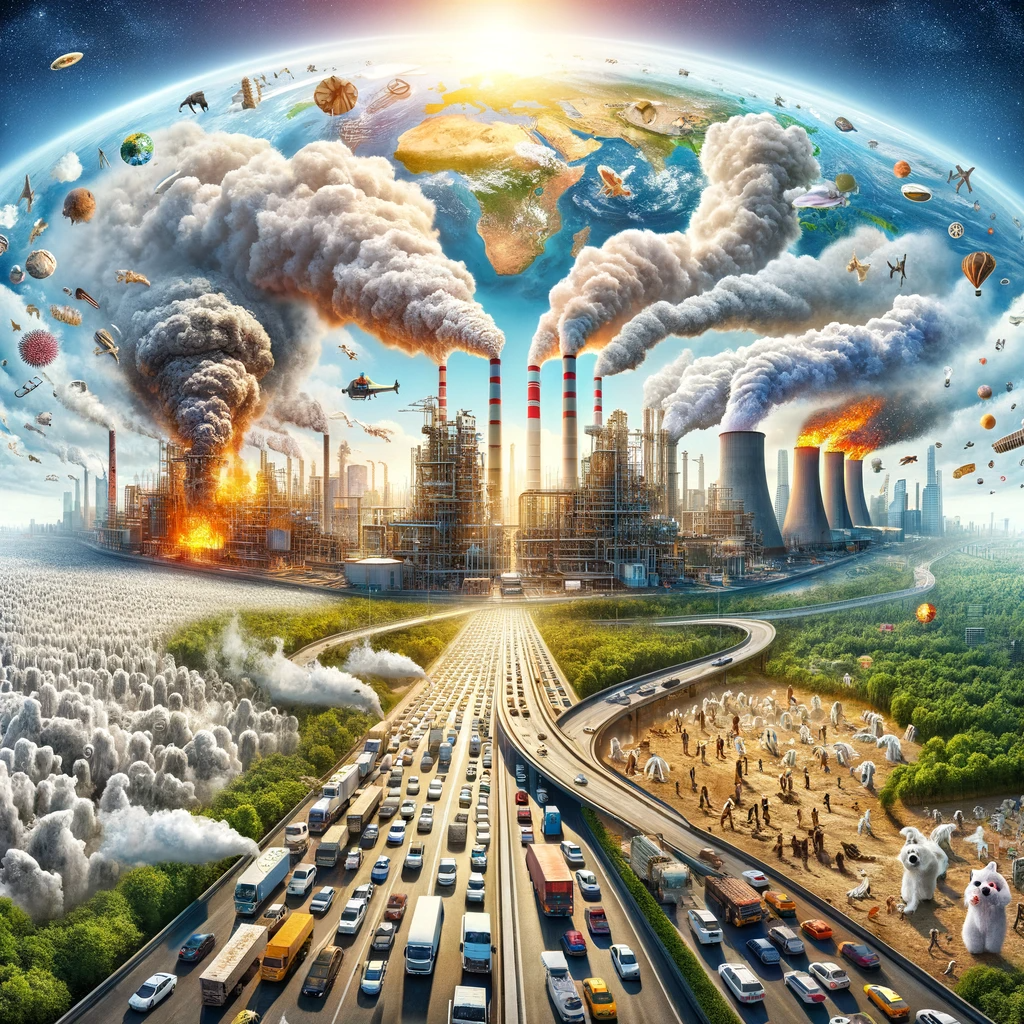
The Role of Human Activity
- Industrial Revolution Impact: Signified the start of substantial climate alterations induced by human activities.
- Fossil Fuel Emissions: The primary driver of global warming and climate change.
🏭 From Industrialization to Climate Change 🌍
🕰️ Historical Context 🌐
- Rapid Industrial Growth: Post-1800s, fossil fuel use skyrocketed, altering the atmosphere.
- Urbanization and Deforestation: Contributed significantly to the increase in greenhouse gases.
🏙️ Modern-Day Contributions 🌱
- Energy Production: Coal, oil, and gas remain dominant energy sources, heavily influencing climate change.
- Transportation and Agriculture: Significant sources of greenhouse gas emissions.
🔍 The Evidence of Human Influence 👤
🌍 Carbon Footprint Studies 📊👣
- Greenhouse Gas Emissions: Human activities have significantly increased carbon dioxide, methane, and nitrous oxide levels.
- Deforestation Impact: Forest depletion worsens global climatic shifts by diminishing carbon dioxide absorption.
🌟 Technological Advancements 📈🔬
- Industrial Technologies: While beneficial, they often increase greenhouse gas emissions.
- Renewable Energy Progress: Innovations in this area offer hope for reducing climate impact.
🔍 Concluding The Role of Human Activity 🚶♂️🌍
- Incontestable Human Role: The evidence overwhelmingly shows human activities drive climate change.
- Path Forward: Recognizing and addressing these impacts is crucial for a sustainable future.
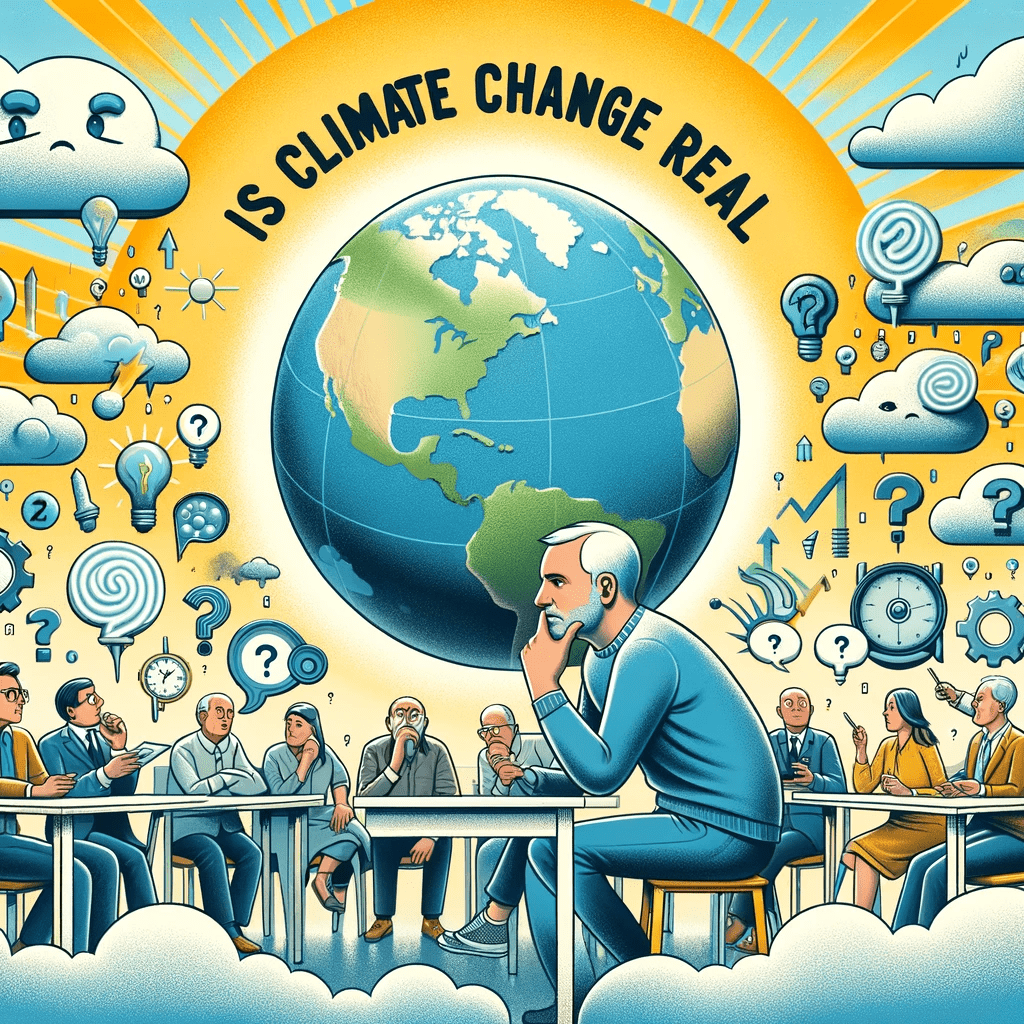
Skeptical Views
- Common Arguments: Explore prevalent arguments skeptics use to question climate change.
- Book Highlight: 🚫 False Alarm: How Climate Change Panic Costs Us Trillions, Adversely Affects Disadvantaged Communities, and Fails to Fix the Planet. 🤨📉
🧐 Addressing Common Skeptical Arguments 🤔📢
🌿 Argument 1: Natural Climate Variability 🔄🌍📚
- Counterpoint: While the climate has natural fluctuations, current changes are unprecedented in speed and scale.
💰 Debate 2: Economic Costs of Action 💼💸🤔
- Rebuttal: Addressing global climatic shifts offers long-term economic benefits that greatly surpass the immediate expenses.
🔬 Discussion 3: Scientific Uncertainty 🧪🤷♂️
- Response: The overwhelming scientific consensus and robust data support the reality of human-induced climate change.
📚 Examining ‘False Alarm’ 🧐📖
📖 Book Overview 📚
- Author’s Perspective: Argues that climate change responses may be economically and socially detrimental.
- Central Themes: Focuses on the cost of climate policies and their impact on global poverty.
🔍 Critical Analysis 🤔
- Contrasting Views: Many experts argue the book underestimates the urgency of climate change action.
- Economic Debate: Discussions on balancing immediate economic costs with long-term environmental sustainability.
📚 The Balance of Opinion ⚖️
🔬 Perspectives in Science 🧪
- Majority View: Strong consensus among scientists supports immediate action against climate change.
- Minority Opinions: Some argue for a more measured approach, citing economic and practical concerns.
🌍 Navigating the Debate 🗣
- Informed Decision Making: Understanding different viewpoints is crucial in forming a well-rounded opinion.
- Critical Thinking: It’s essential to analyze arguments from all sides of the climate debate critically.
🤨 Concluding The Role of Skeptical Views 🧐
- Acknowledging Skepticism: While skepticism is a natural part of scientific discourse, the evidence for climate change is robust.
- Moving Forward: Effective climate action requires considering all viewpoints but basing decisions on scientific evidence.
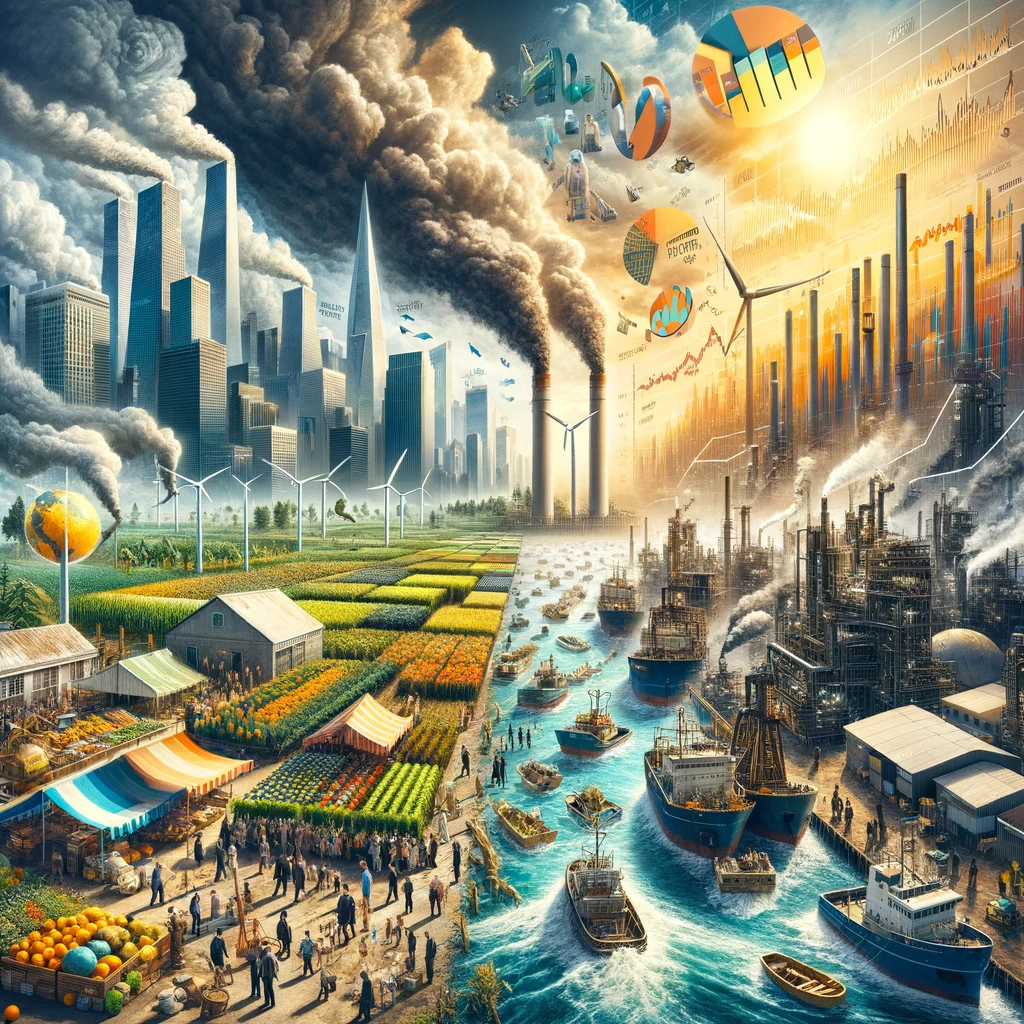
Economic Perspectives
- Economic Impact Analysis: Delve into how climate change influences global and local economies.
- Capitalism vs. Climate: Examine 🌍 This Changes Everything: Capitalism vs. the Climate. 💰
💼 Analyzing Climate Change’s Economic Impact 💰
📈 Short-Term vs. Long-Term Effects 📉
- Immediate Costs: Natural disasters, worsened by shifting global climates, impose substantial economic burdens.
- Future Savings: Investing in sustainable practices can lead to long-term economic benefits.
💼 Global Economic Shifts 💹
- Market Changes: Climate change is reshaping industries, from agriculture to energy.
- Innovation and Jobs: Transitioning to green technologies offers new economic opportunities.
📚 Review of ‘This Changes Everything’ 🤔
📖 Book Overview 📚
- Author’s Argument: Naomi Klein discusses how capitalism contributes to climate change.
- Key Themes: Emphasizes the conflict between capitalist markets and environmental sustainability.
🔍 Insights from the Book 📚
- Economic Systems and Climate: The book argues for a fundamental shift in economic thinking.
- Policy Recommendations: Suggests large-scale changes to address the climate crisis.
🌍 Capitalism and Climate Change 📈
🏢 The Role of Corporations 🌱
- Corporate Responsibility: Many contend that businesses should take on a more crucial role in tackling shifts in global climate patterns.
- Profit vs. Planet: Balancing economic growth with environmental responsibility remains challenging.
💰 Economic Models and Sustainability 🌿
- Alternative Approaches: Exploring sustainable economic models prioritizing environmental health.
- Green Economy: The transition to renewable energy and sustainable practices as economic drivers.
📊 Concluding Economic Perspectives 🌍
- Economic Realities: Climate change poses challenges and opportunities for the global economy.
- Forward-Thinking Strategies: Embracing sustainable practices can lead to economic and environmental benefits.
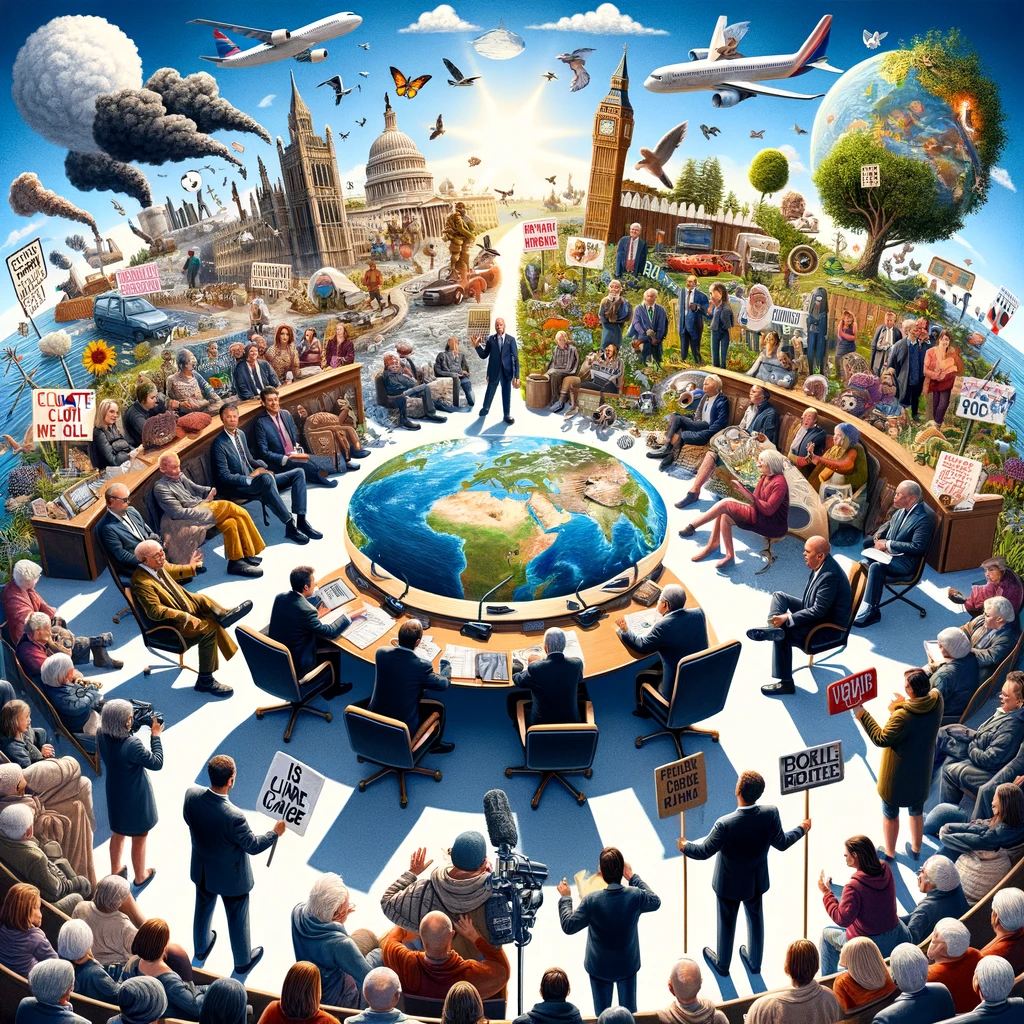
Political and Social Factors
- Politics and Climate Change: Investigate how political dynamics shape discussions and actions regarding global climatic shifts.
- Social Implications: Delve into the societal and public perspectives on climate change.
🌐 The Intersection of Politics and Climate Change 🏛️
🌍 Political Divides 🌏
- Polarized Views: Climate change often divides opinions along political lines.
- Policy Impact: Government policies are crucial in addressing or neglecting climate issues.
🌐 Global Political Responses 🌐
- International Agreements: Political commitments, such as the Paris Agreement, are crucial for addressing the challenges of global climatic shifts.
- National Policies: Different countries adopt varying approaches to climate change, influenced by politics.
👥 Society’s Perception 👥
📢 Public Awareness and Concern 📢
- Growing Awareness: More people are recognizing the seriousness of climate change.
- Diverse Opinions: Public views vary, influenced by media, culture, and personal beliefs.
📺 The Role of Media 📺
- Media Influence: Media coverage significantly shapes public perception and understanding of climate issues.
- Information vs. Misinformation: The challenge of distinguishing factual information from misinformation in media.
🌍 Climate Change in the Social Context 🌍
🤝 Community Action 🌍
- Grassroots Movements: Local efforts often pioneer in raising awareness and driving action against the altering global climate.
- Community Resilience: Communities adapting to climate impacts showcase the power of collective action.
✊ Social Justice and Climate Change 🌍
- Disproportionate Effects: Climate change disproportionately affects marginalized communities.
- Calls for Equity: Social movements advocate for fair and equitable climate solutions.
🤝 Concluding Political and Social Factors 📊
- Political and Social Dynamics: Understanding these aspects is crucial for effective climate change communication and action.
- Collaborative Efforts: Bridging political and social divides is crucial in addressing the climate crisis comprehensively.
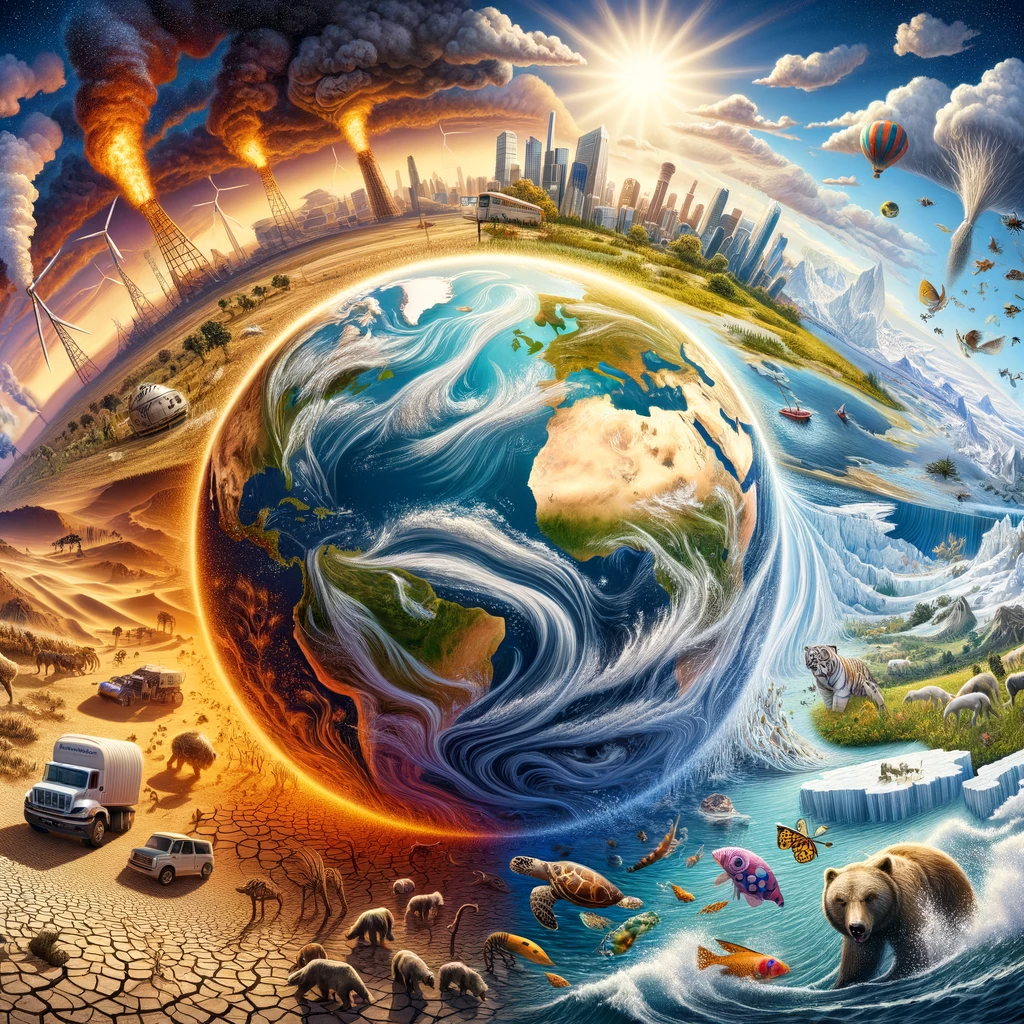
Environmental Impacts
- Consequences: Explore the broad spectrum of environmental effects caused by climate change.
- Real-world Examples: Illustrate these impacts with tangible case studies and examples.
🌍 Delving into the Consequences 🌿 ⚠️
🌍 Global Warming 🔥
- Rising Temperatures: Earth’s average surface temperature has consistently increased.
- Heatwaves: More frequent and intense heatwaves directly result from global warming.
🌿 Ecosystem Disruptions 🚧
- Habitat Alterations: Climate change affects habitats, leading to biodiversity loss.
- Ocean Acidification: Increased CO2 levels cause ocean acidification, impacting marine life.
📊 Case Studies: Climate Change in Action 🌍
❄️ The Arctic Meltdown 🔥
- Ice Cap Reduction: The Arctic ice caps are melting at an unprecedented rate.
- Impact on Wildlife: This melting disrupts the lives of species like polar bears and seals.
🌲Bush Fires🔥
- Intense Wildfires: Climate change has intensified bush fires in regions like Canada, United States, Australia and other areas.
- Environmental and Human Toll: These fires cause widespread destruction to ecosystems, humans and their communities.
🌍 Climate Change and Natural Disasters🔥
🌪️ Increased Frequency and Severity 🌊
- Hurricanes and Typhoons: These are becoming more intense due to warmer ocean waters.
- Floods and Droughts: Altered weather patterns lead to more severe floods and prolonged droughts.
- Wildfires: Globally, the worsening of wildfire conditions is being intensified by shifting climatic patterns.
🔥 The Impact of Wildfires 🌲
- Greater Intensity and Frequency: Rising temperatures and prolonged droughts contribute to more frequent and intense wildfires.
- Global Incidents: Massive fires in Canada, Australia, the Amazon, and the United States highlight this trend.
- Ecosystem and Human Impact: Wildfires devastate ecosystems, destroy property and lives, and pose serious health implications and risk.
🏜️ Understanding the Connection 🌞
- Droughts and Heatwaves: These conditions, worsened by shifting global weather patterns, create ideal environments for wildfires.
- Forest Management Challenges: Climate change complicates forest management and fire prevention strategies.
🌱 Mitigation and Adaptation 🛠️
- Improved Land Management: Strategies include controlled burns and better land use planning.
- Community Preparedness: Educating communities in fire-prone areas about risk reduction and emergency response.
⚠️ Concluding Environmental Impacts 🌐
- Alarming Environmental Reality: The effects of climate change on the environment are profound and far-reaching.
- Call for Action: Addressing these impacts requires urgent and coordinated global efforts.
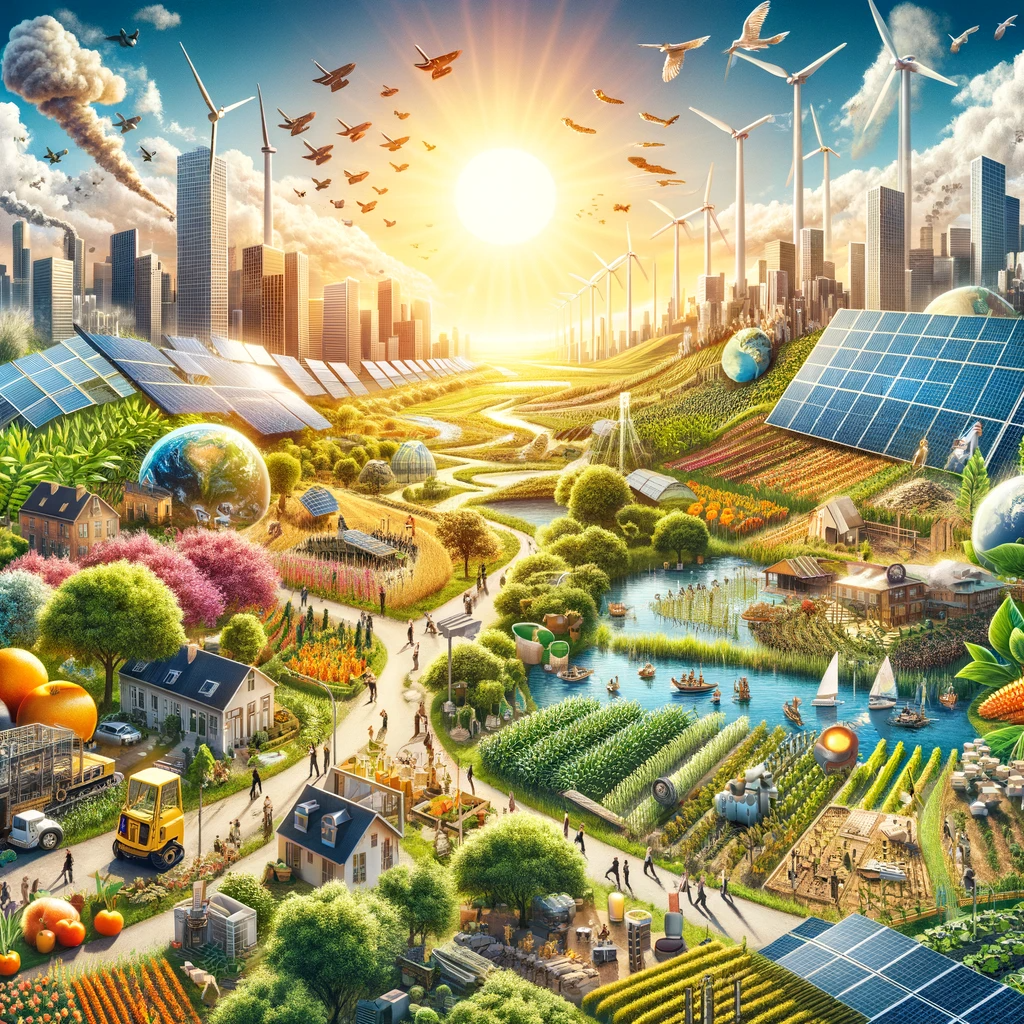
Adaptation and Mitigation Strategies
- Global Efforts: Investigate the comprehensive international actions taken to counteract global climatic alterations.
- Practical Guide: Explore insights from How to Prepare for Climate Change: A Practical Guide to Surviving the Chaos.
🌬️ International Mitigation Efforts 🌳
🌍 Global Agreements 🛠️
- Paris Agreement: A landmark treaty with commitments to reduce greenhouse gas emissions.
- Sustainable Development Goals include climate action and sustainability targets.
🌱 Technological Innovations 💡
- Renewable Energy: The shift towards wind, solar, and other renewable energy sources.
- Carbon Capture Technologies: Emerging tech aimed at reducing atmospheric CO2 levels.
🌳 Adaptation Strategies for Communities and Individuals 🌬️
🏗️ Infrastructure Resilience 🏞️
- Building Standards: Developing infrastructure to withstand extreme weather events.
- Urban Planning: Designing cities with climate resilience in mind.
🤝 Community Preparedness 🌍
- Local Initiatives: Grassroots efforts to increase community awareness and readiness.
- Resource Management: Effective use of water and natural resources in climate-vulnerable areas.
📘 Insights from ‘How to Prepare for Climate Change.’ 🌱
🔬Guide Overview 🌳
- Author’s Perspective: Provides practical advice for individuals facing climate change challenges.
- Key Topics: Covers a range of topics from emergency preparedness to community engagement.
🛠️ Practical Applications 🌬️
- Personal Preparedness: Advice for adjusting to environmental shifts impacting daily life.
- Community Action: Encourages collective efforts to create resilient communities.
🛡️ The Importance of Proactive Measures 🌿
💪Individual Responsibility 🌏
- Lifestyle Changes: Emphasizing the role of personal choices in reducing carbon footprint.
- Awareness and Education: Staying informed and spreading knowledge about climate issues.
🤲 Global Collaboration 🌤️
- International Cooperation: The need for countries to work together to address climate challenges.
- Policy and Action: Advocating for policies that support sustainable development and climate resilience.
🔚 Concluding Adaptation and Mitigation Strategies 🌱
- Active Engagement Required: Tackling global environmental shifts requires proactive actions from both the international community and individuals.
- Hope through Adaptation: With the right strategies, we can navigate and mitigate the impacts of climate change.
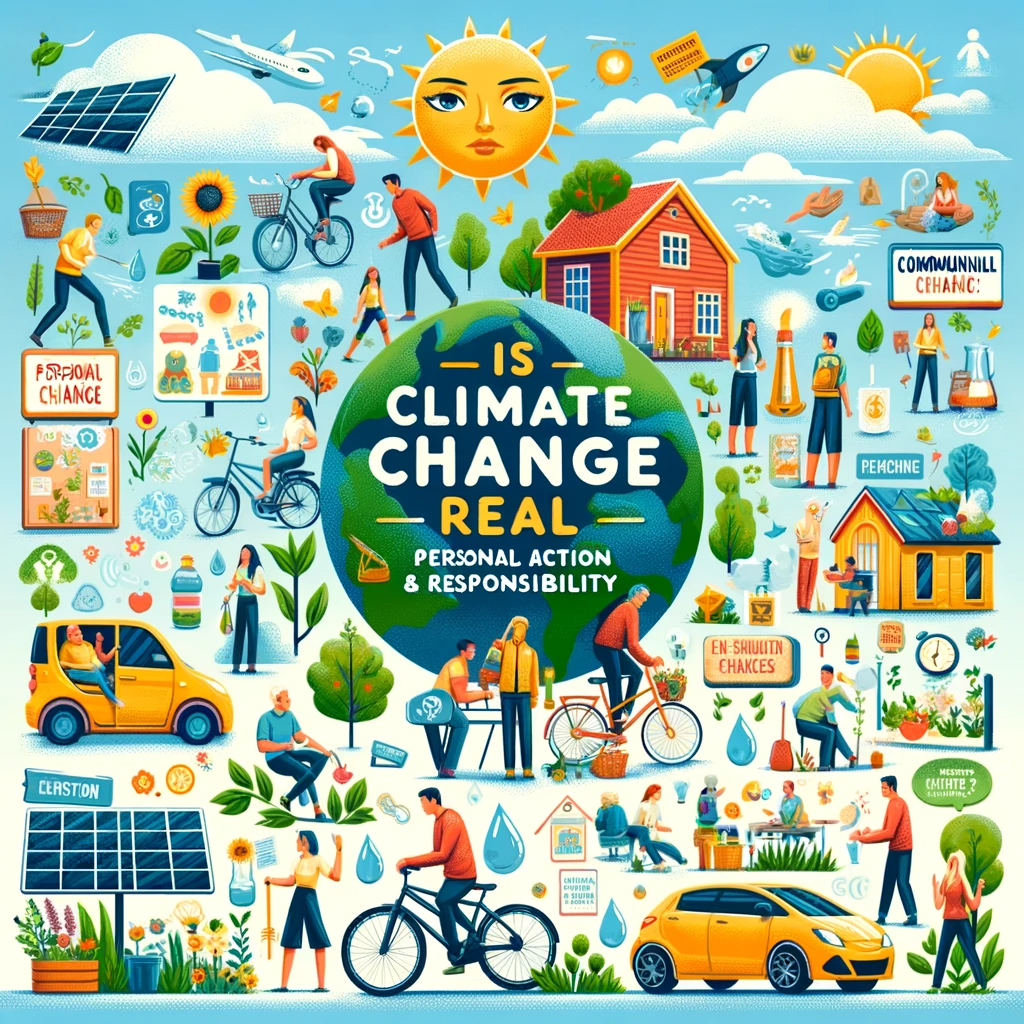
Personal Action and Responsibility
- Individual Actions: Detail steps individuals can undertake to combat the effects of global environmental shifts.
- Lifestyle Changes: Stress the crucial role of personal choices and responsibility.
✊ Empowering Individual Actions 💡
👣 Reducing Carbon Footprint 🌿
- Energy Efficiency: Use energy-saving appliances and LED lighting at home.
- Sustainable Transportation: Opt for public transit, cycling, or electric vehicles.
♻️ Eco-Friendly Consumption 🌍
- Mindful Eating: Choose plant-based diets and reduce food waste.
- Conscious Shopping: Buy local and sustainable products to minimize carbon emissions.
🔄 The Power of Lifestyle Changes 💡
🛒 Everyday Choices 🌱
- Recycling and Reusing: Implement recycling habits and use reusable products.
- Water Conservation: Save water with efficient fixtures and mindful usage.
📢 Advocacy and Education 🎓
- Spreading Awareness: Inform others about the impacts of global environmental shifts and the importance of sustainable practices.
- Community Engagement: Participate in local environmental groups and initiatives.
📢 Advocacy and Education 🎓
💬 Influencing Others 🌟
- Leading by Example: Inspire friends and family through your sustainable actions.
- Social Media Influence: Use platforms to share knowledge and eco-friendly habits.
🌳 Long-Term Benefits ⏳
- Health and Well-being: Healthy lifestyle choices often align with sustainable practices.
- Economic Savings: Many eco-friendly choices lead to financial savings over time.
🔚 Concluding Personal Action and Responsibility 🤝
- Individual Impact Matters: Small personal actions collectively make a significant difference.
- Taking Responsibility: Adopting a sustainable lifestyle is crucial in fighting against the rapid alterations in global environmental conditions.
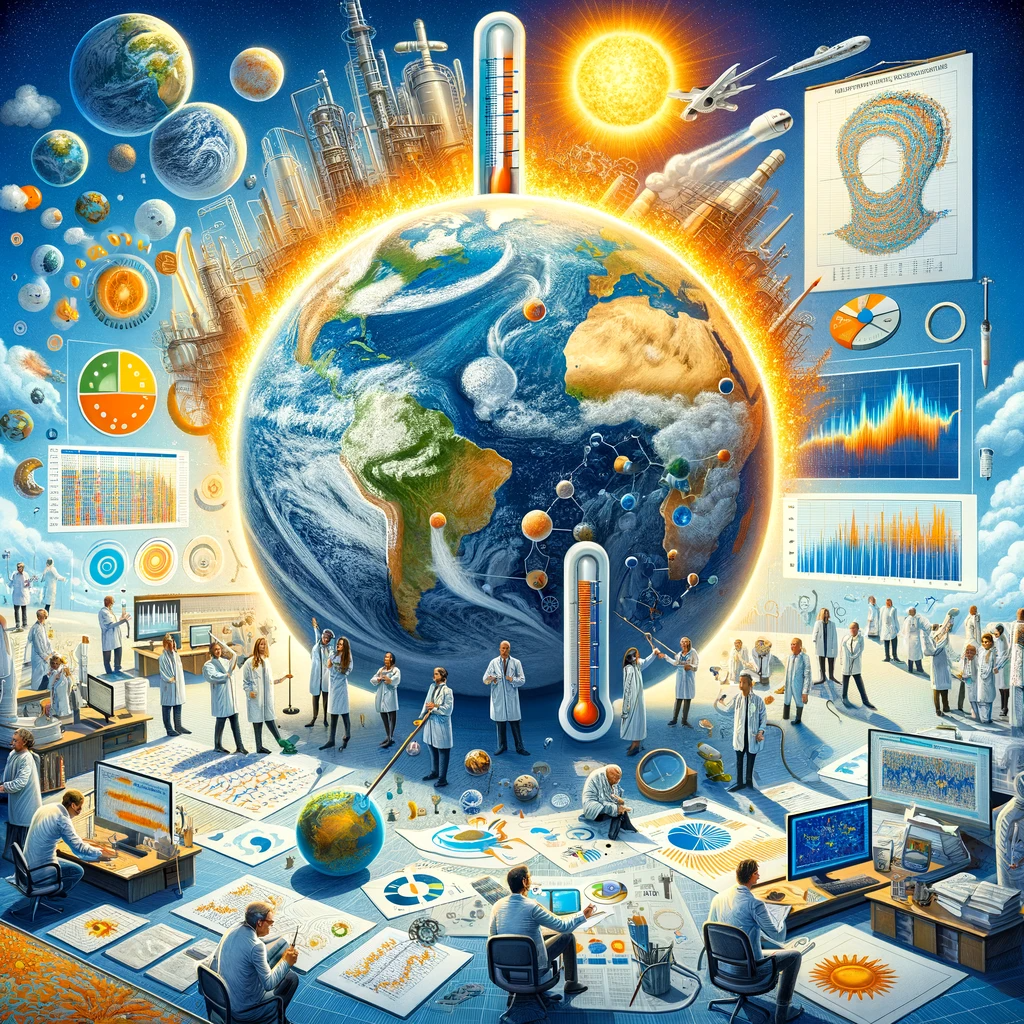
Supporting Studies and Scientific Consensus
📊 Top 5 Studies Affirming Climate Change 🌎
1. 🔍 IPCC Assessment Reports 🌍
- Explanation: The IPCC releases comprehensive assessment reports summarizing the current state of climate knowledge. These reports result from collaborations between thousands of scientists and review the latest in climate research, impacts, and mitigation strategies.
2. 🚀 NASA’s Evidence for Rapid Climate Change🌡️
- Explanation: NASA showcases convincing evidence of rapid global climatic shifts, noting increasing global temperatures, warmer oceans, diminishing ice sheets, and more frequent extreme weather occurrences.
3. 🇺🇸 National Climate Assessment – USA 🌧️
- Explanation: This report from the U.S. Global Change Research Program evaluates the science and effects of climate change across the United States, covering topics such as human health, water supply, agriculture, and more.
4. 🔬 The Berkeley Earth Surface Temperature Study🌡️
- Explanation: This independent assessment provides a straightforward and transparent approach to evaluating global temperatures. It verifies a significant rise in Earth’s temperature, corroborating the findings of major studies on global climatic shifts.
5. 🌍 Global Carbon Project 📊
- Explanation: This project provides critical data on global carbon budgets and emissions trends. It highlights the growing atmospheric carbon dioxide levels primarily due to fossil fuel emissions and deforestation.
📚 Scientific Consensus on Climate Change🌡️
- Summary: The scientific consensus on climate change is strong and backed by extensive research. Numerous leading scientific organizations across the globe, such as the American Association for the Advancement of Science, the American Meteorological Society, and the National Aeronautics and Space Administration (NASA), concur on the pressing need to tackle climate change as it poses a significant threat to our planet.
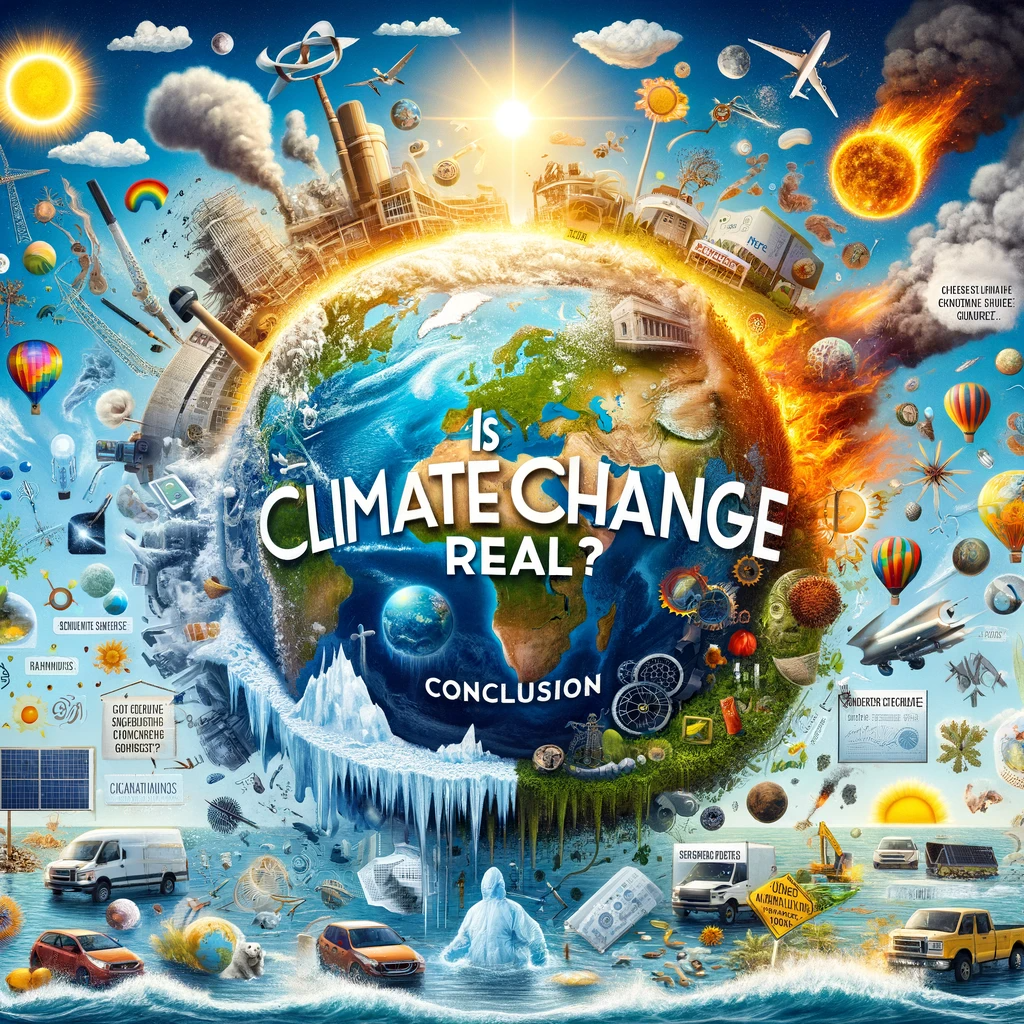
Conclusion
- Summary: Reflect on the comprehensive evidence and diverse perspectives discussed.
- Final Thoughts: Affirm the undeniable reality of climate change and the urgency to act.
📝 Summarizing Key Points 🧩
📊 Evidence and Consensus 🤝
- Scientific Agreement: An overwhelming consensus exists among scientists regarding the reality of climate change.
- Observable Effects: Real-world impacts provide tangible proof, from melting ice caps to extreme weather.
💼 Social-Economic Aspects 🌍
- Economic Implications: Global environmental shifts pose challenges and opportunities for economies worldwide.
- Political and Social Dynamics: These factors significantly influence climate change policies and public perception.
🤔 Reflecting on Climate Change Reality 🌍
🔐 The Indisputable Truth 🌎
- Unprecedented Changes: Current climatic shifts are unparalleled in speed and magnitude.
- Human Influence: Scientific data conclusively links human activities to these changes.
⏳ The Need for Immediate Action 🚀
- Global Efforts: International treaties and initiatives are crucial for effective climate action.
- Personal Responsibility: Individual choices and actions are crucial in mitigating climate change.
📢 Final Thoughts: A Call to Action 🚀
🚀 Beyond Acknowledgment 🌍
- Proactive Engagement: Recognizing climate change’s reality is the first step; action must follow.
- Collective Responsibility: Combating climate change requires a unified effort from individuals, communities, businesses, governments and nations.
🛤️ The Path Forward 🌄
- Hope through Innovation: Technological advancements and sustainable practices offer pathways to a greener future.
- The Power of Change: Each action contributes to a more considerable positive impact, no matter how small.
Final Words
- Climate Change Is Real: The evidence is clear, and the time to act is now.
- Our Shared Future: We can face this challenge and work towards a sustainable and resilient world.
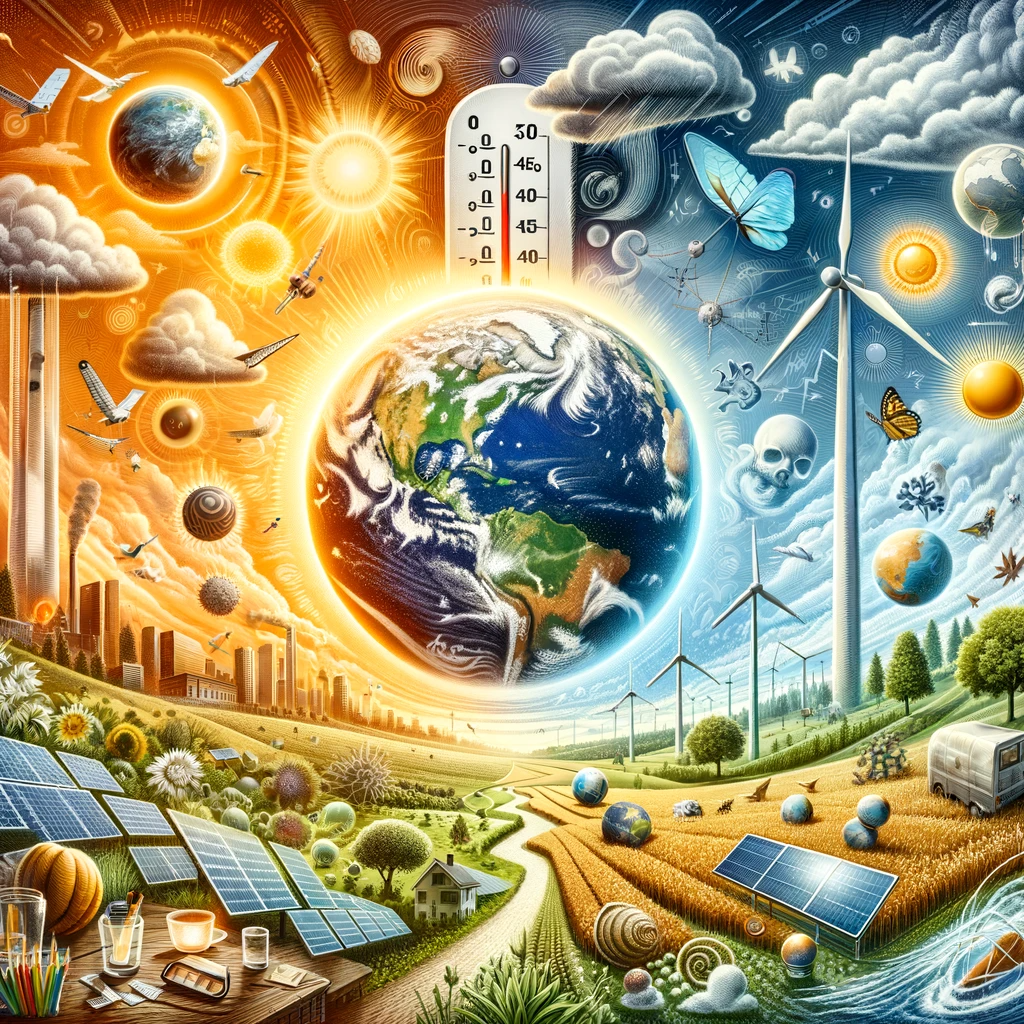
Other Articles
Thank you for exploring ‘Powerful Clarification | Is Climate Change Real Or Not?’ Your engagement in this critical topic is invaluable. If you found this article enlightening, please consider sharing it to spread awareness. Also, dive deeper into related topics on sunnydaysgo.com:
- Atmospheric Science Glossary Entry: Delve into the fundamentals of atmospheric science, a key field in understanding climate dynamics. Learn more.
- Wind Energy Pros and Cons: The Definitive Analysis: This article provides a balanced view of wind energy, discussing its advantages and challenges in today’s energy landscape. Explore the analysis.
- How Does a Wind Turbine Generate Electricity?: Ever wondered about the mechanics behind wind turbines? This piece breaks down the process in an easy-to-understand format. Discover how.
- Global Warming Potential (GWP) Glossary Entry: Get a clear understanding of what Global Warming Potential means and its relevance to climate change. Read more.
- Ultimate DIY Solar System Review | Bible Guide + VIDEO: This comprehensive guide, complete with a video, walks you through creating your own solar system, a great step towards sustainable living. Check out the guide.
Each article is designed to enrich your knowledge and help you make informed decisions about environmental issues. Happy reading!
